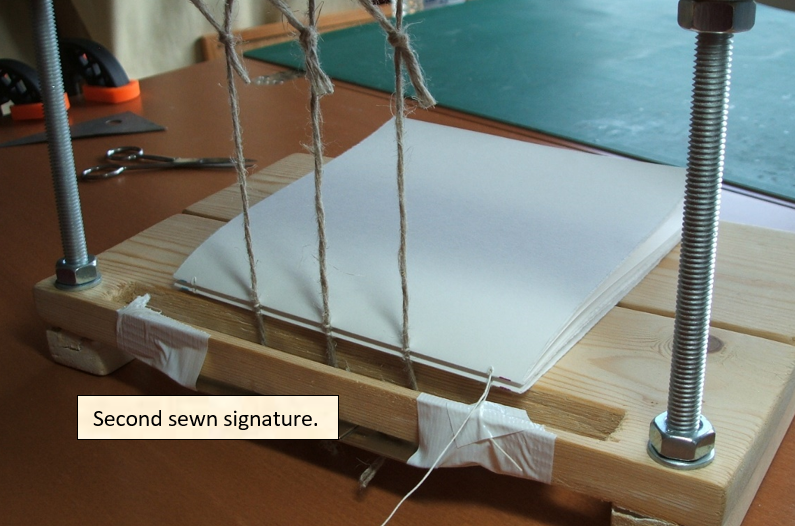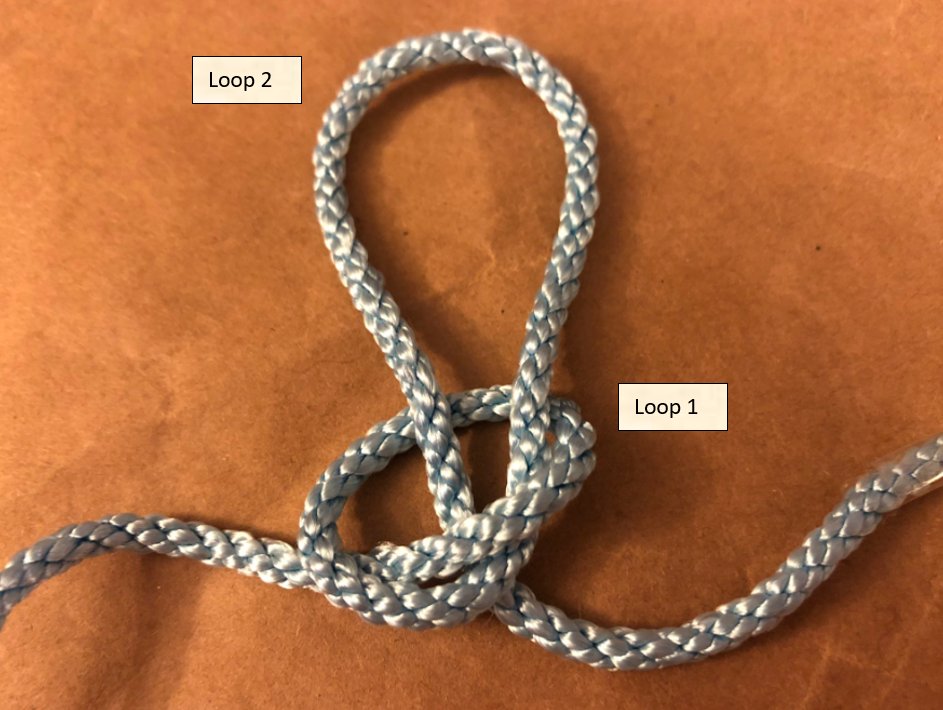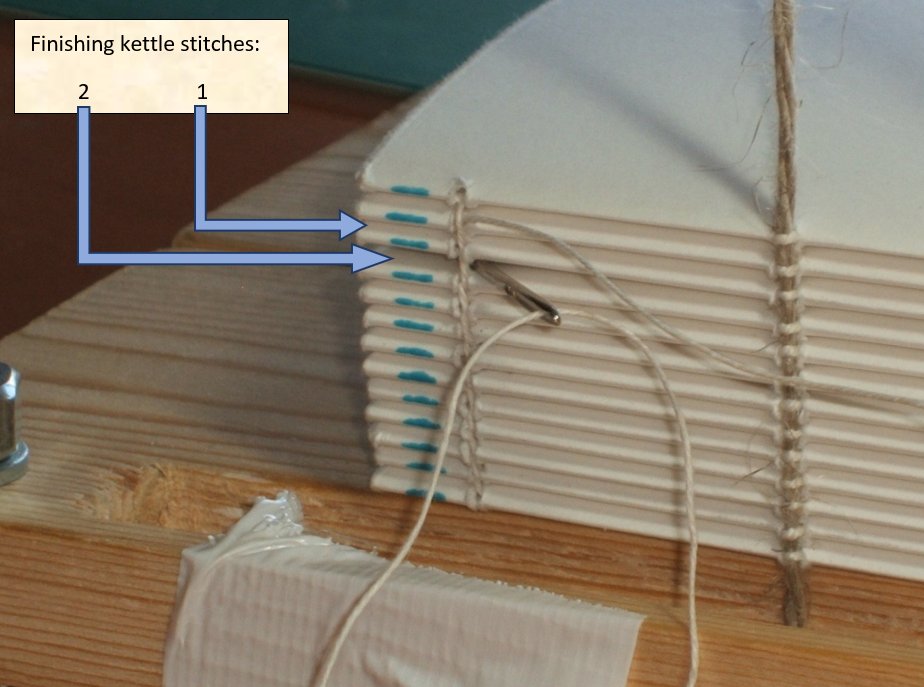Your folded signatures (sets of nested folios), which should have been sitting patiently under a clean piece of board, will be removed one at a time for sewing. To ensure you place them in the same orientation as they were stored, you may
Next, take your first signature and align it with the cords. If you're using tape, each pair of sewing holes should sit either side of the tape.
Thread your needle with a length of waxed linen thread (or whatever alternative you managed to find).
Push the needle through the right hand hole (with the fold in the signature facing you)
It's a little like a formal dance, but with fewer sublimated hormonal urges.
"But Aziraphale, why is it called 'kettle stitch'?", you ask, with eager faces shining. Possibly.
It’s quite possible that, during sewing, you’ll find yourself running out of thread. This is perfectly normal and nothing to worry about.
Start by placing the text block between two clean pieces of board near to the front of your work space.
Have some /küechelin/. You have absolutely earned it!
We will adjourn, here. Next time, we'll look at shaping the spine,
As always, feel free to ask questions, and I hope to see you at the next installment of #BookbindingWithAziraphale!
































